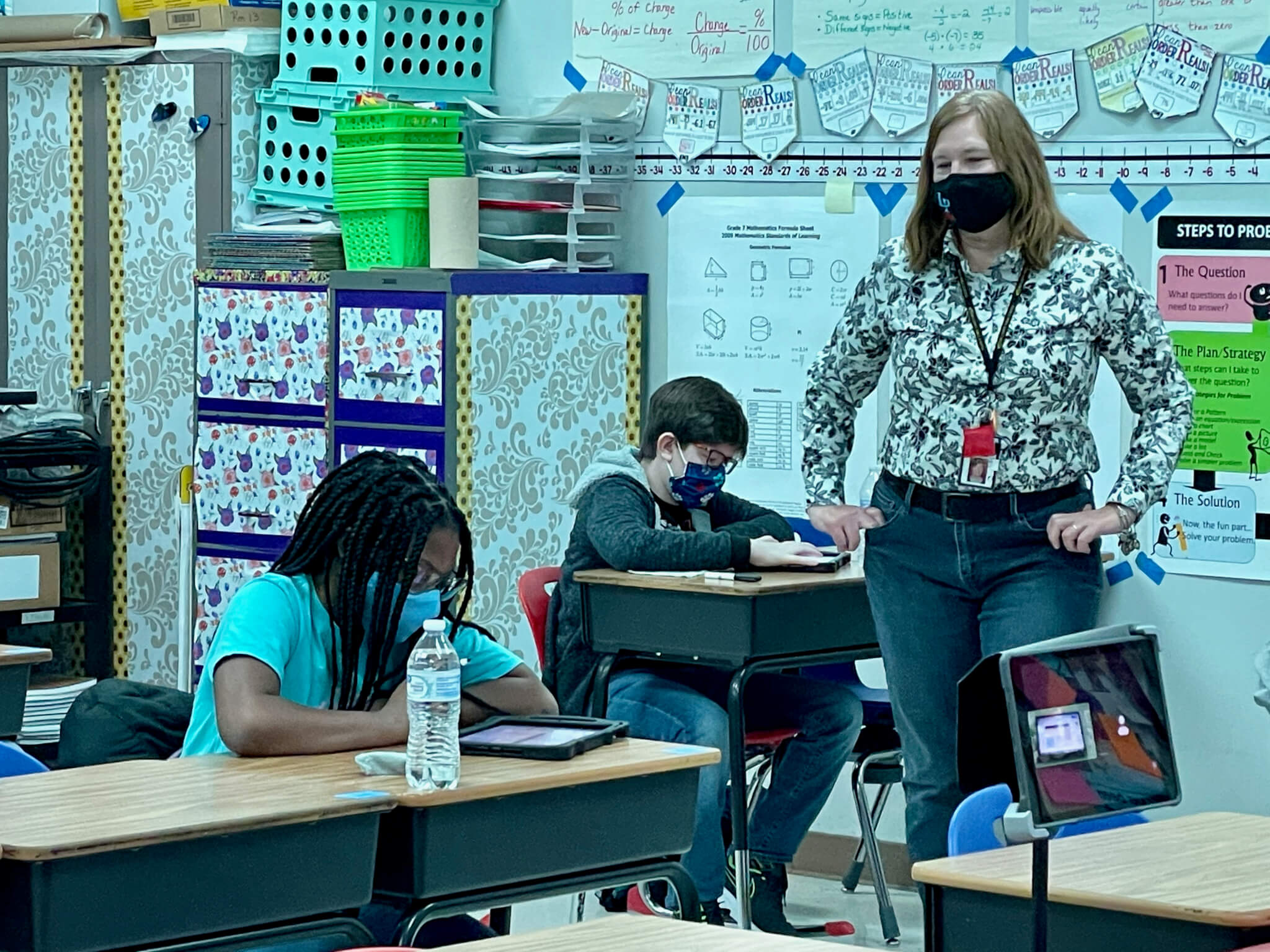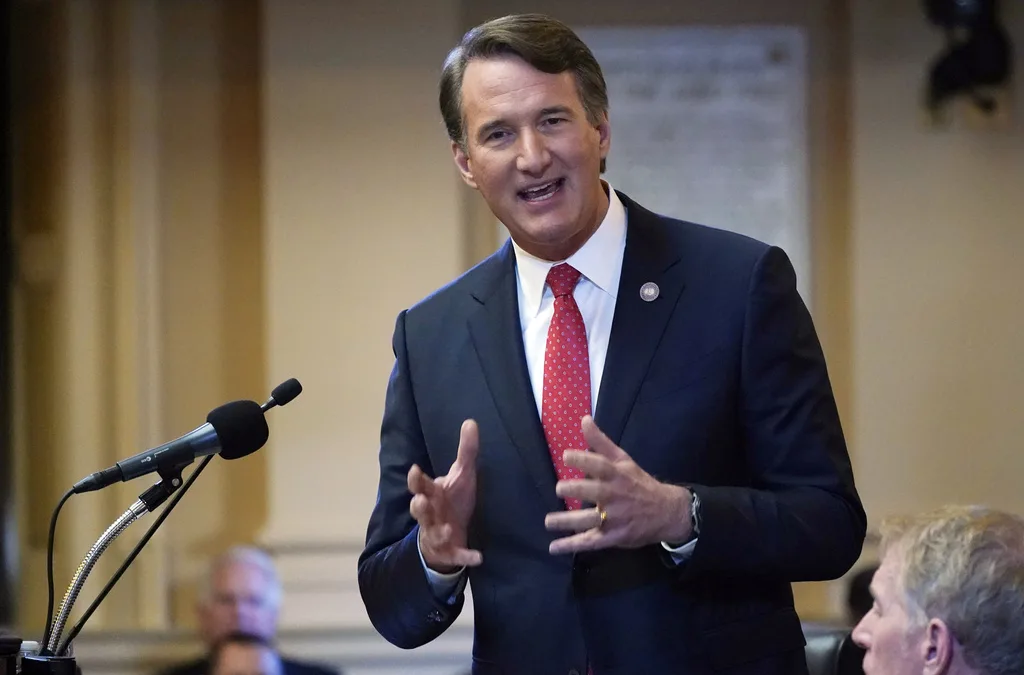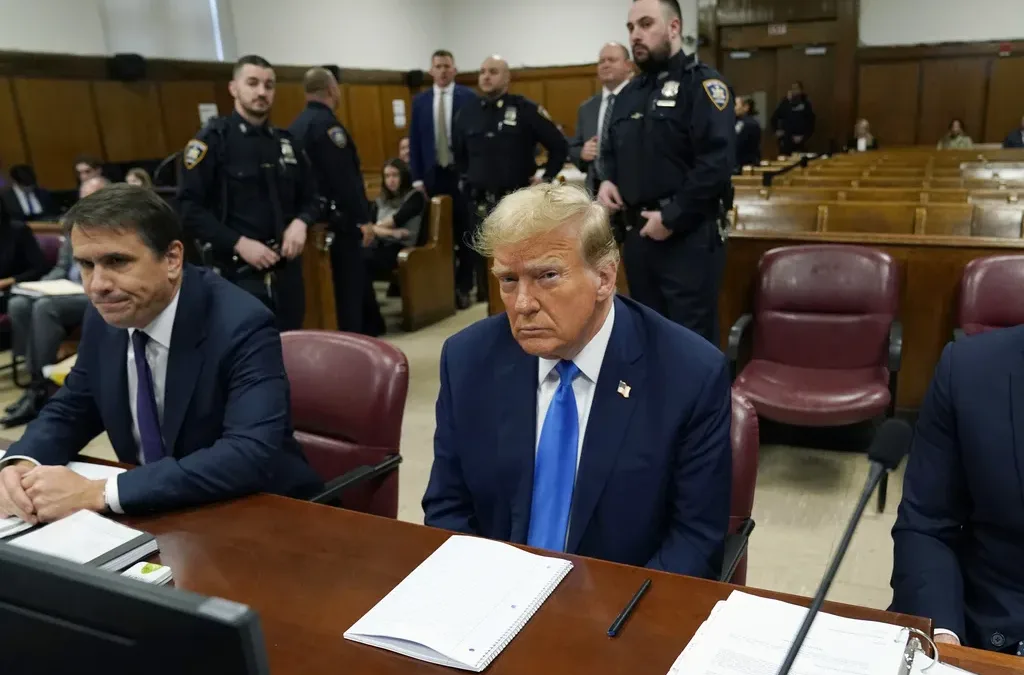
Contributed photo - Rita Browning teaches math class at Laurel Park Middle School.
Last year was hard on schools. The Virginia Board of Education’s report breaks down the new challenges schools faced, and familiar issues the pandemic made worse.
RICHMOND—It’s no secret that schools faced major hurdles over the past year-and-a-half. From the immediate switch to virtual learning in March 2020 to masking up for class, education doesn’t look the same as it did before the pandemic.
The Virginia Board of Education released their annual report on the “Condition and Needs” of the state’s public schools, and it gives insight into some of the first pandemic-year findings. The 189-page report found the COVID-19 pandemic presented numerous challenges for public education—several new, and some fueling previously existing concerns, that could last “long after the pandemic ends.”
The Challenges Schools Face, Both New and Old
The new challenges highlighted in the report include:
- Offering remote and/or hybrid education as needed
- The lack of qualified personnel to teach remotely
- Declines in enrollment
- Increased pressure on parents as they faced the reality of educating their children at home
- Heightened tensions between and among some parents and educators and education leaders
The report also noted challenges beyond academic learning, including the importance of children’s mental well-being. It cited findings from a study of 3,300 students from across the nation that found 30% of participants felt unhappy or depressed more often, followed by 29% saying they didn’t feel connected to adults at school and 23% facing connection difficulties with classmates.
And the challenges that were around before COVID-19 but made worse by the pandemic? Teacher shortages and achievement gaps, especially for students from disadvantaged backgrounds. In addition to needing special education elementary and middle school teachers, the report also found teachers aren’t the only school-centered position in need of additional hands.
“Local school divisions are also experiencing challenges in other staffing areas such as bus drivers and cafeteria workers,” the report said. “Early childhood programs are plagued with similar challenges. The disparity between child care wages and cost of living results in significant turnover of staff in early childhood classrooms and creates disruptions in learning that are impossible to ignore.”
The Economics of Enrollment
Uncertainty in student enrollment also presented challenges, both in the 2020-21 school year and in early childhood centers throughout the commonwealth.
Public school divisions receive funding based off of per pupil attendance, but overall attendance dropped by 38,150 in 2020-21. The declines could negatively impact local school division budgets, subject to adjustments from the General Assembly.
The uncertainty surrounding the budget comes at a poor time for Virginia schools. The Joint Legislative Audit and Review Commission published a report that found Virginia ranks 27th of 50 states for state and local per pupil funding for pre K-12 education. The commonwealth ranks 40th of 50 for state per pupil funding.
The funding concerns came in tandem with further findings from the study, showing that state direct aid per pupil decreased 5.4%, adjusted for inflation. On average, the funding falls more than $600 short per student from meeting the Board’s proposed Standards of Quality for 2022.
Enrollment also dipped in publicly-supported early childhood care and education programs. Head Start enrollment was down 30% for the 2020-2021 school year, down 6% for the Virginia Preschool Initiative, and down 19% for overall preschool enrollment. Participation in child care subsidies dropped to a low of approximately 14,500 children in January 2021, a drop of 43% from before COVID-19. The report cautioned that the decrease could impact school-readiness in years to come.
Noting the Good With the Bad
During a meeting to discuss the report, board member Anne Holton suggested including some positives in the summary, to highlight the struggles teachers, children, and parents endured last year. She cautioned against giving the assumption that “everything’s fine,” but also didn’t want to skip mentioning education accomplishments.
Daniel Gecker, president of the board, said there wasn’t enough data yet to know where Virginia schools stood post-pandemic.
“I don’t think we’ve seen enough test scores,” Gecker said. “I don’t know, you know, if we understand yet the impact of the learning loss. I don’t think we know.”
He supported including positive accomplishments, but encouraged giving a glimpse into some of the specific hardships schools faced during the academic year.
“I think it’s at this juncture, to me, it’s particularly important to say we have had a difficult period of time,” Gecker said. “We have staffing issues within the profession. We have funding issues now. And we are really not sure if, you know, we can maintain where we have been unless we change things on the ground. And that honestly means not only more resources but how we allocate resources is important to the prescribed [Standards of Quality].”
Gecker also expressed that shedding too positive a light could impact the public’s perception of necessary changes. For example, including that Virginia schools ranked 4th in the nation could prompt bias that everything’s going well as-is, when in actuality improvements are needed.
While still currently a draft, the board approved the annual Condition and Needs report presented on Nov. 17 the following day. The draft is still subject to edits from the work session, editorial approval by Gecker and Wilson, and technical changes before going to Gov. Ralph Northam and the General Assembly on December 1.
Amie Knowles reports for The Dogwood. You can reach her at [email protected]
Politics

Opinion: The problem with Youngkin’s Charter-Lab schools push in 2024
The Problem Governor Glenn Youngkin introduced 233 amendments to the bipartisan budget so it was hard to know how to assess his budget–for example,...

What to know about Trump’s legal issues
Over the past year, former president Donald Trump has become the center of not one, not two, not three, but four criminal investigations, at both...
Local News

Virginia verses: Celebrating 5 poetic icons for National Poetry Month
There’s no shortage of great writers when it comes to our commonwealth. From the haunting verses of Edgar Allan Poe, who found solace in Richmond's...

Join the fun: Recapping Family Literacy Night’s storybook adventures
When’s the last time you read a book aloud with a loved one? If it’s difficult to answer that question, then maybe it’s time to dust off that TBR...





